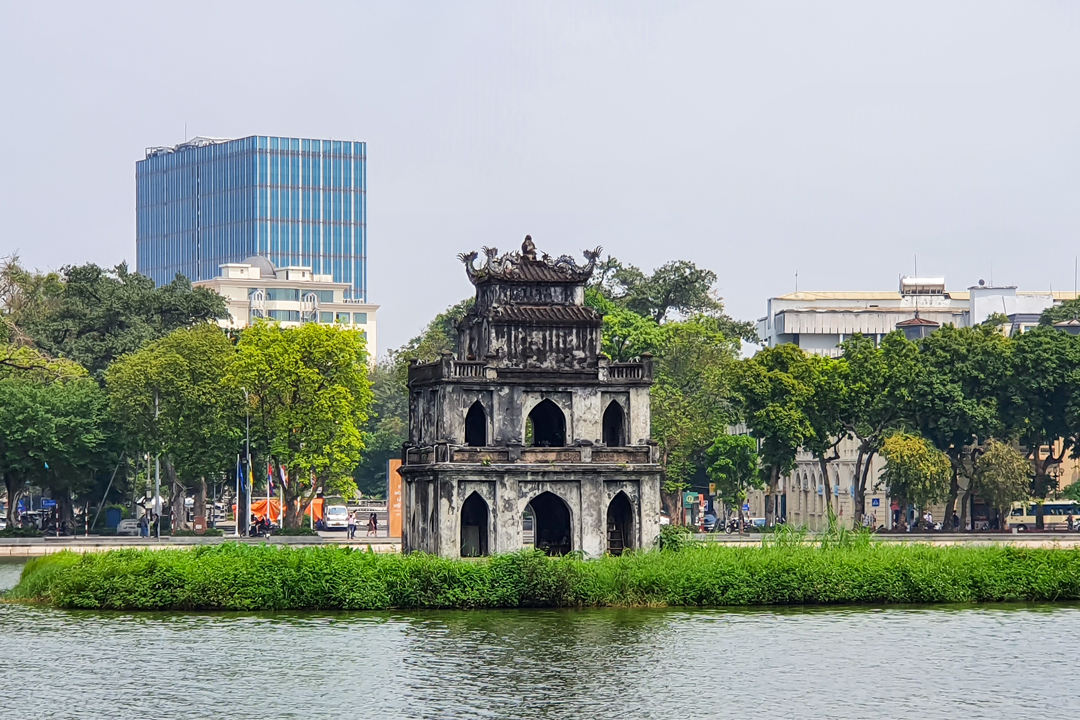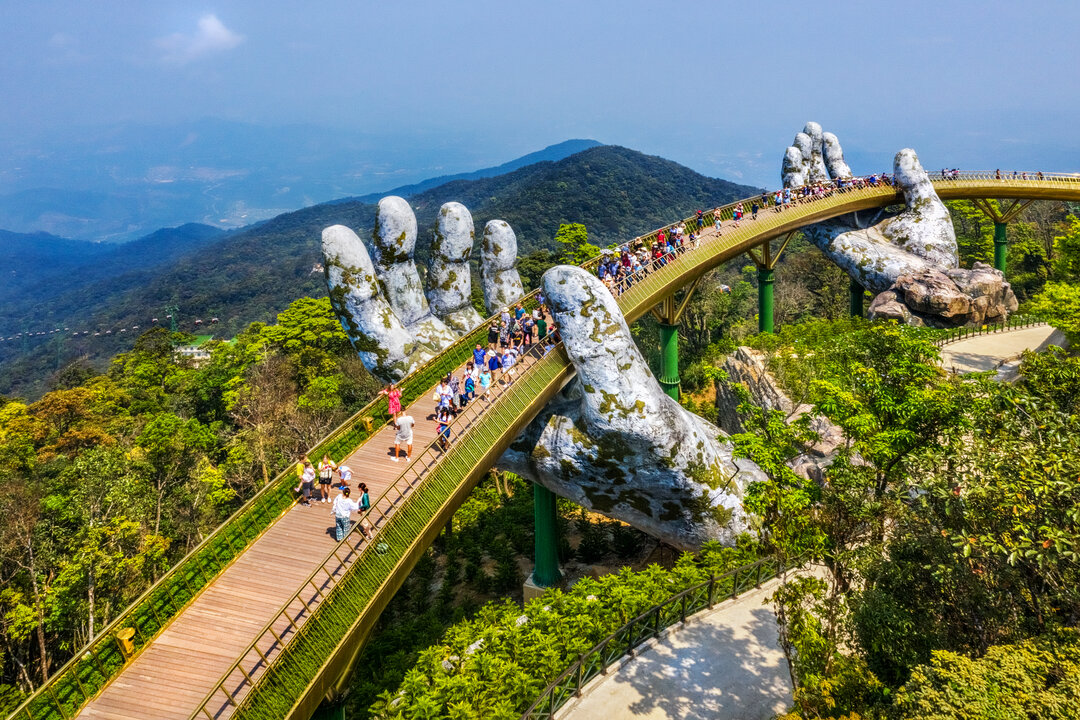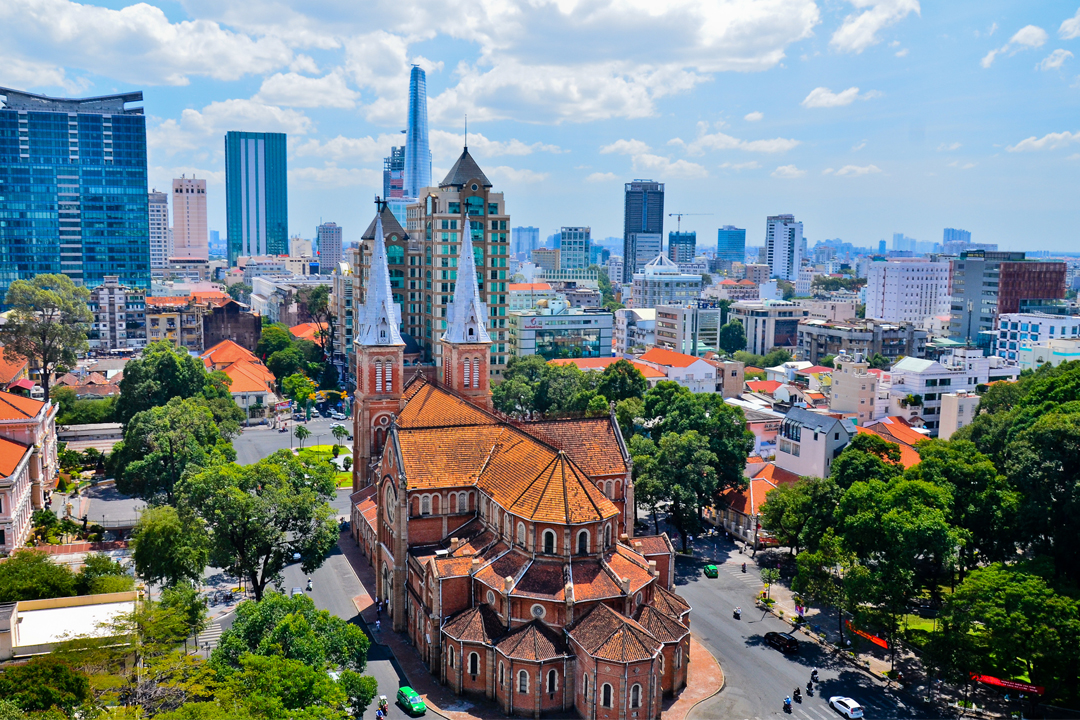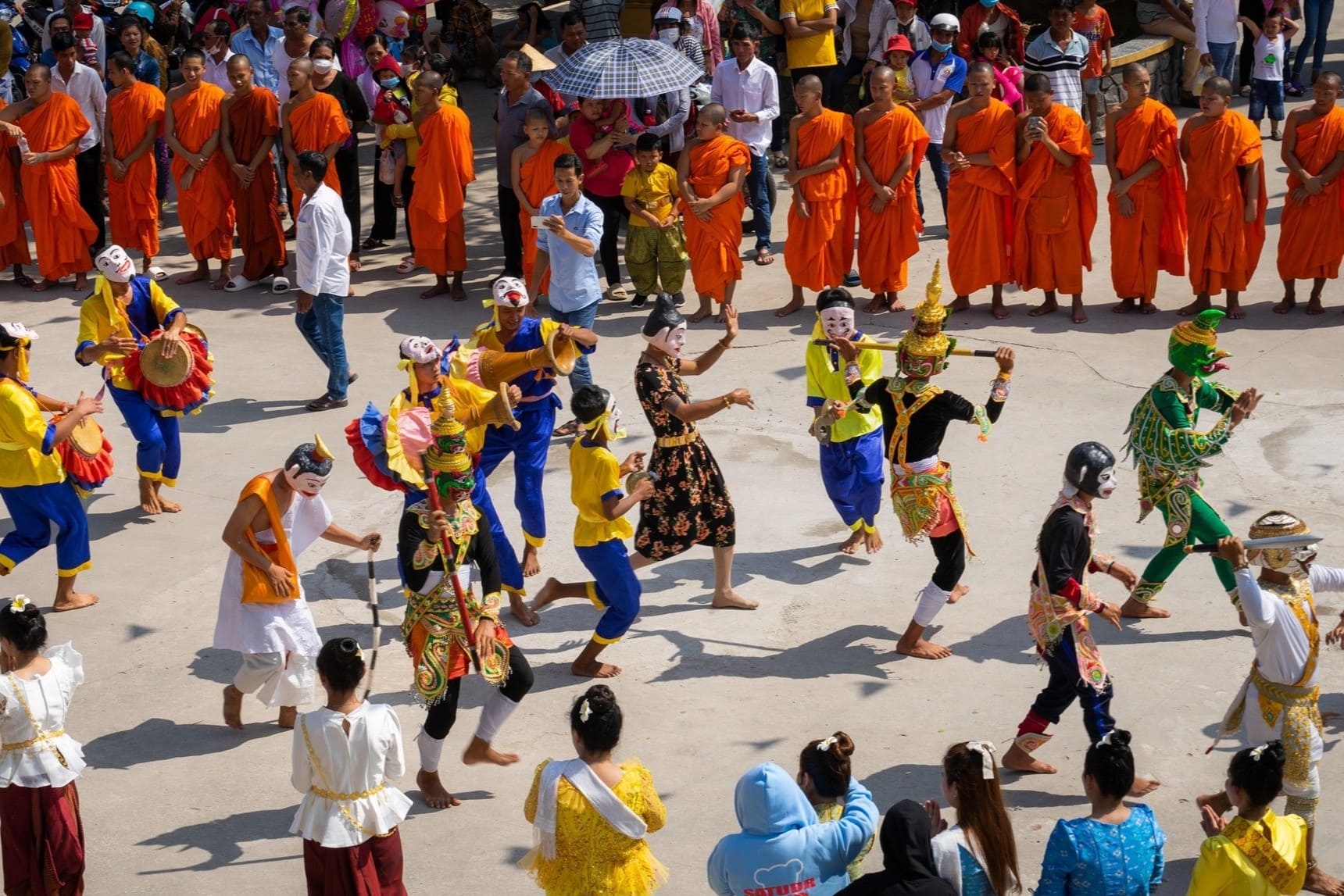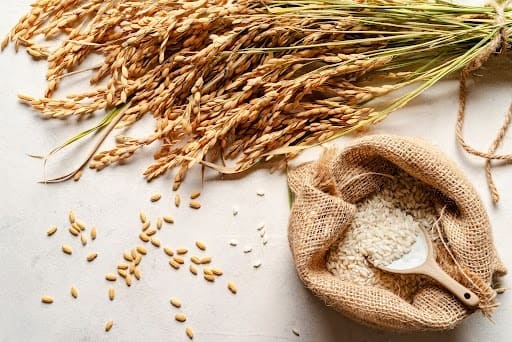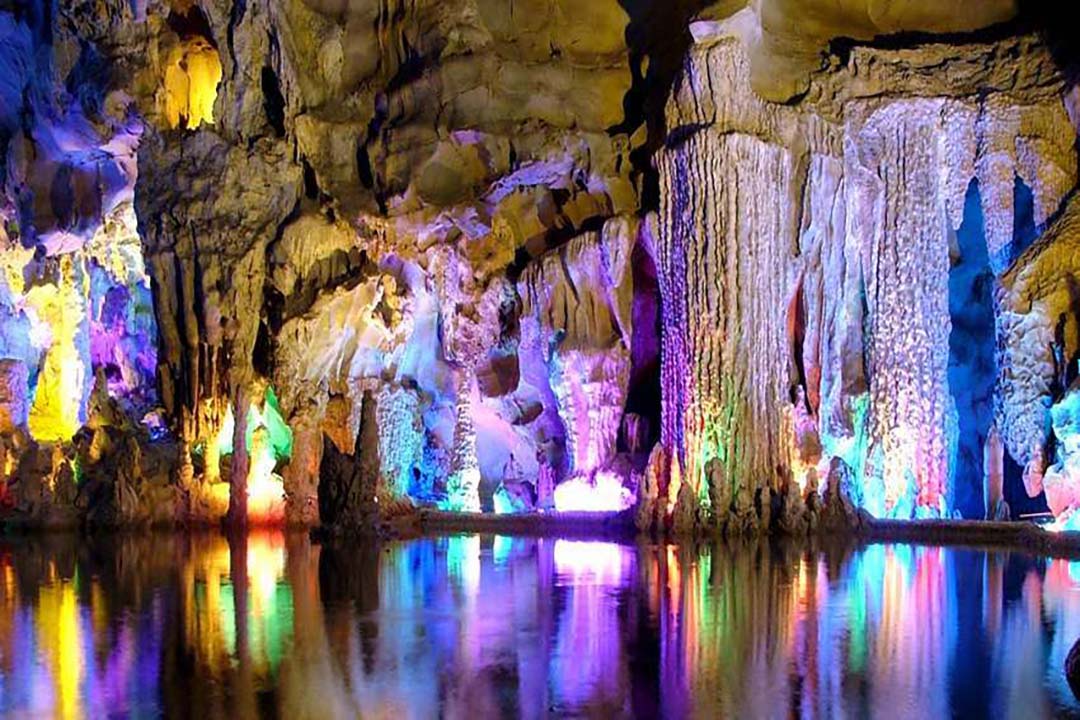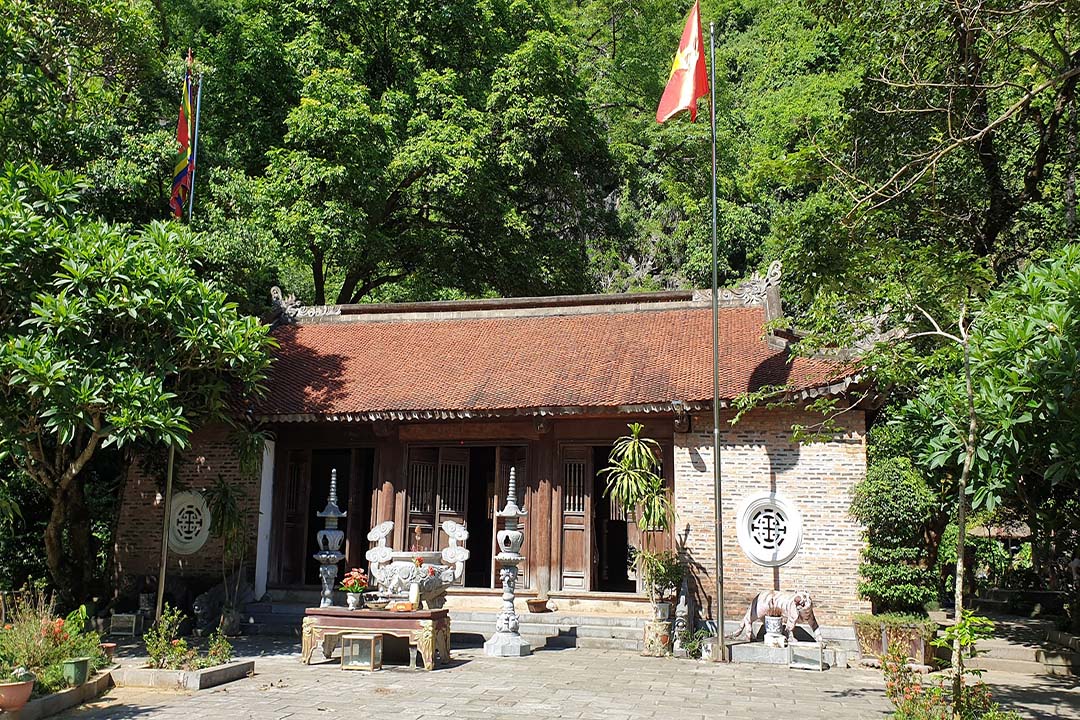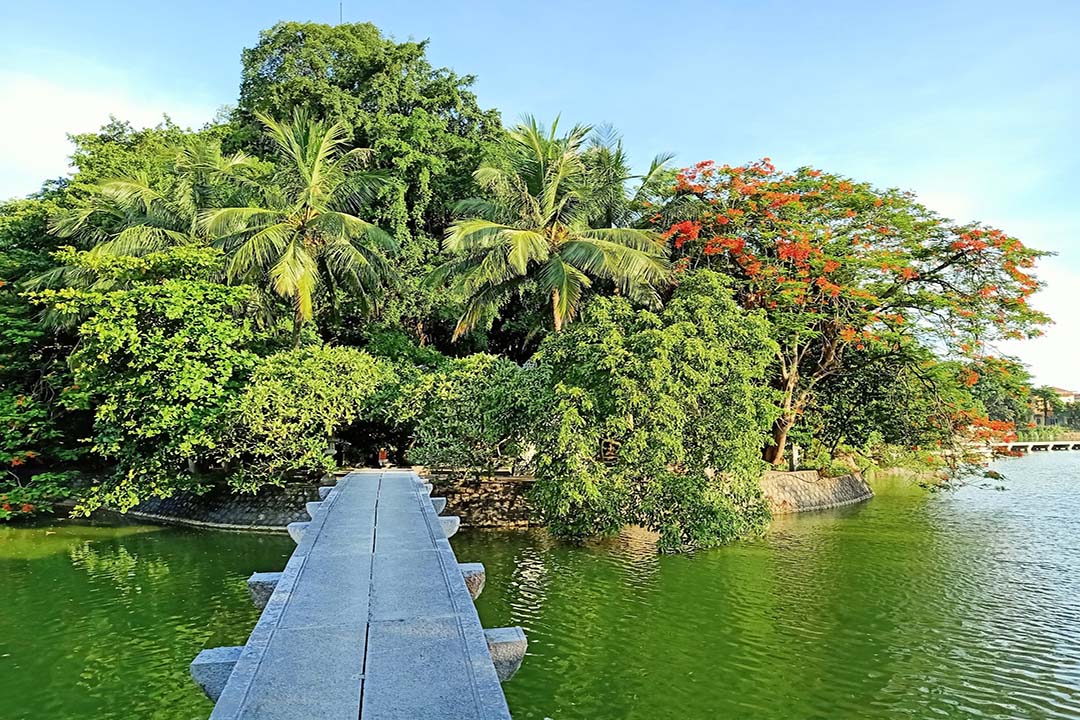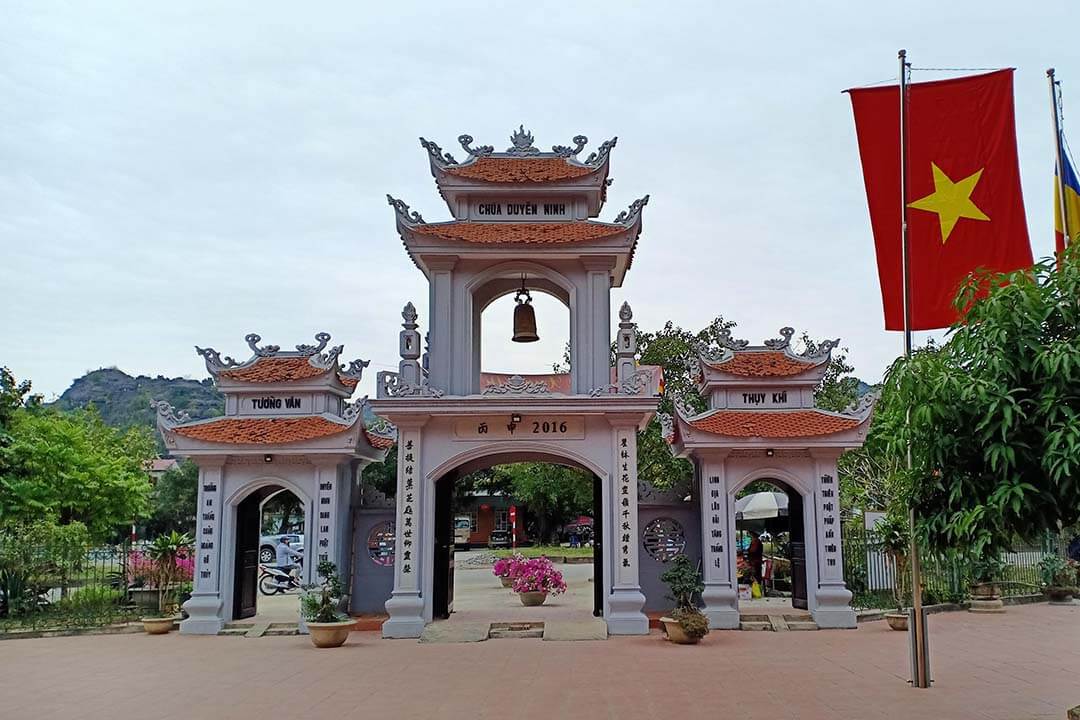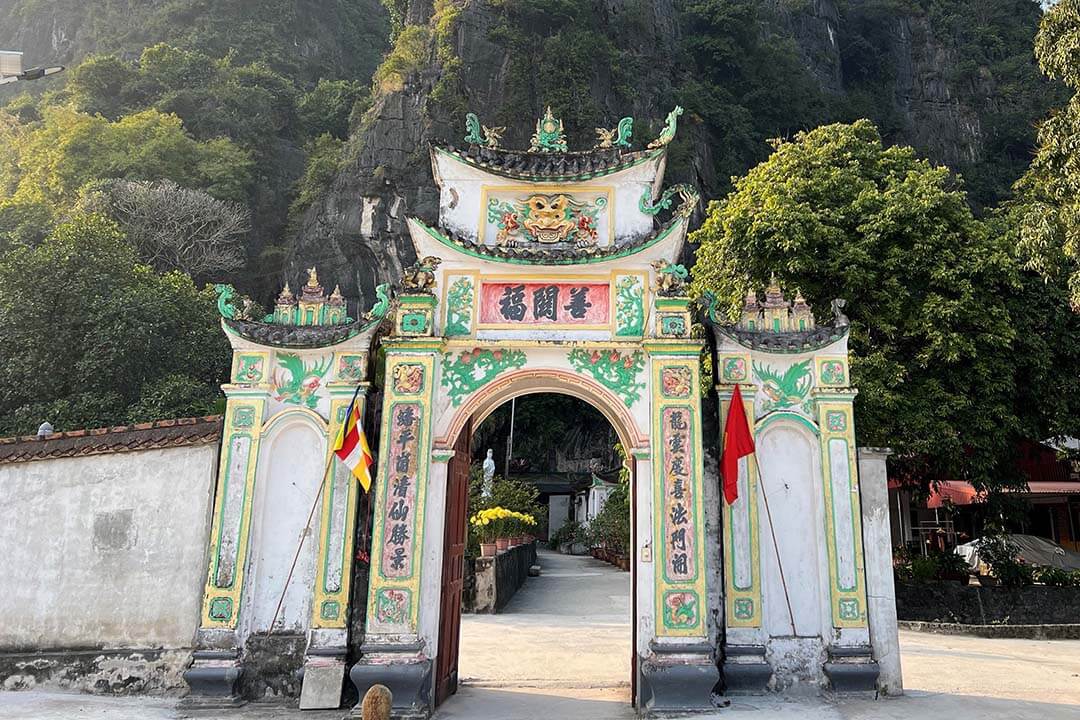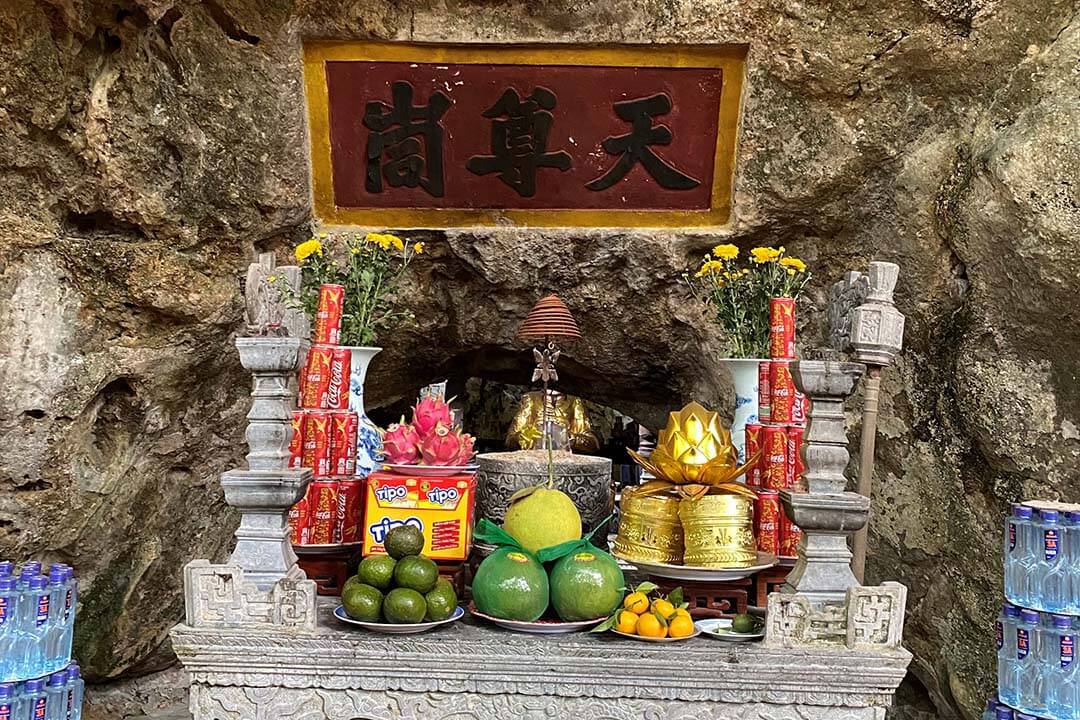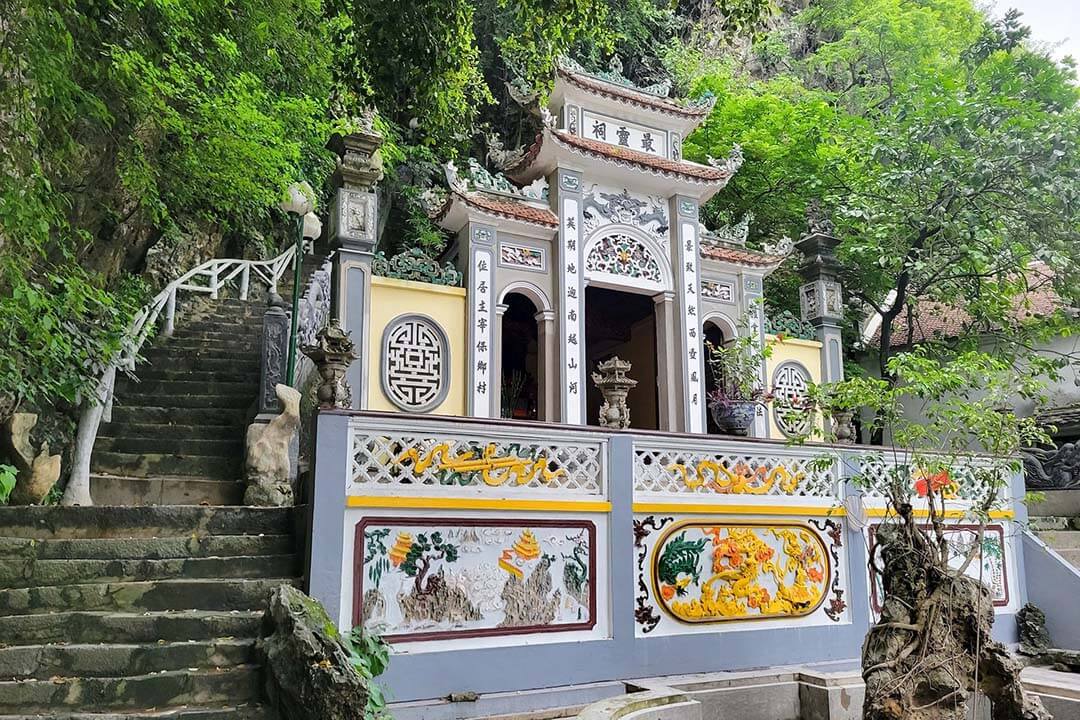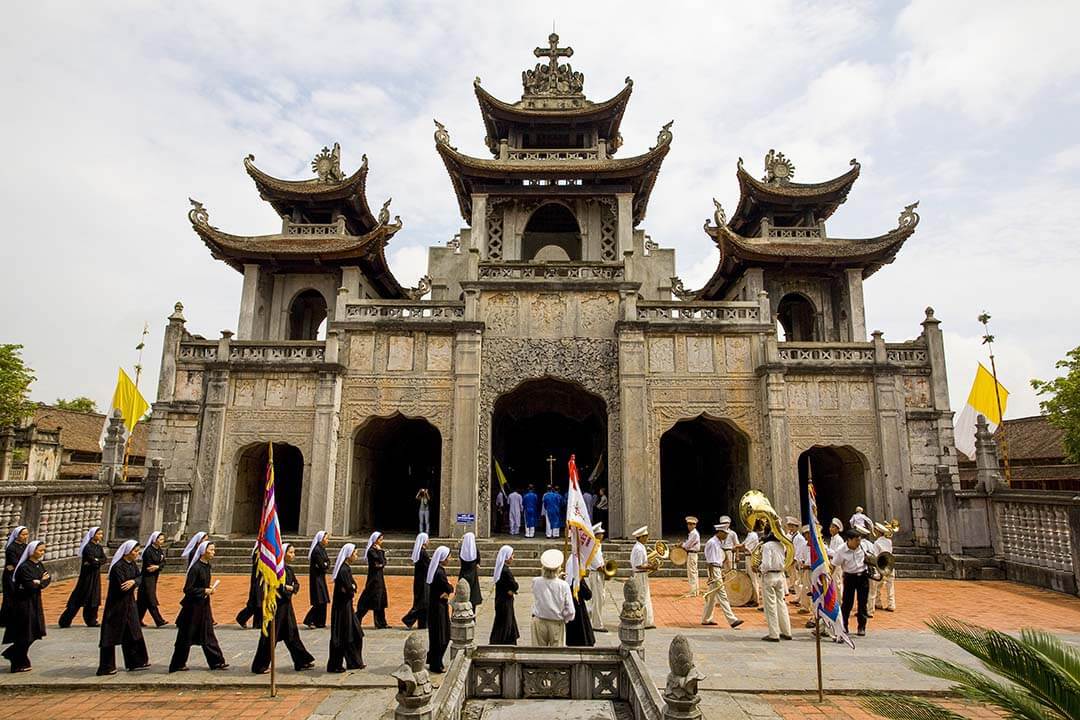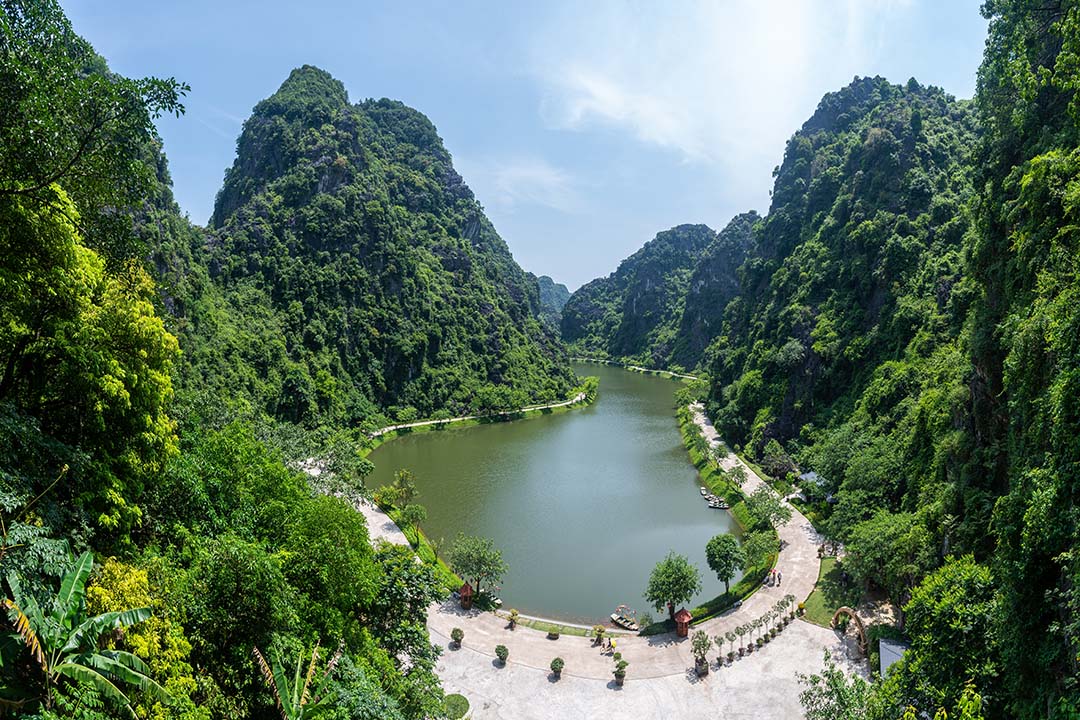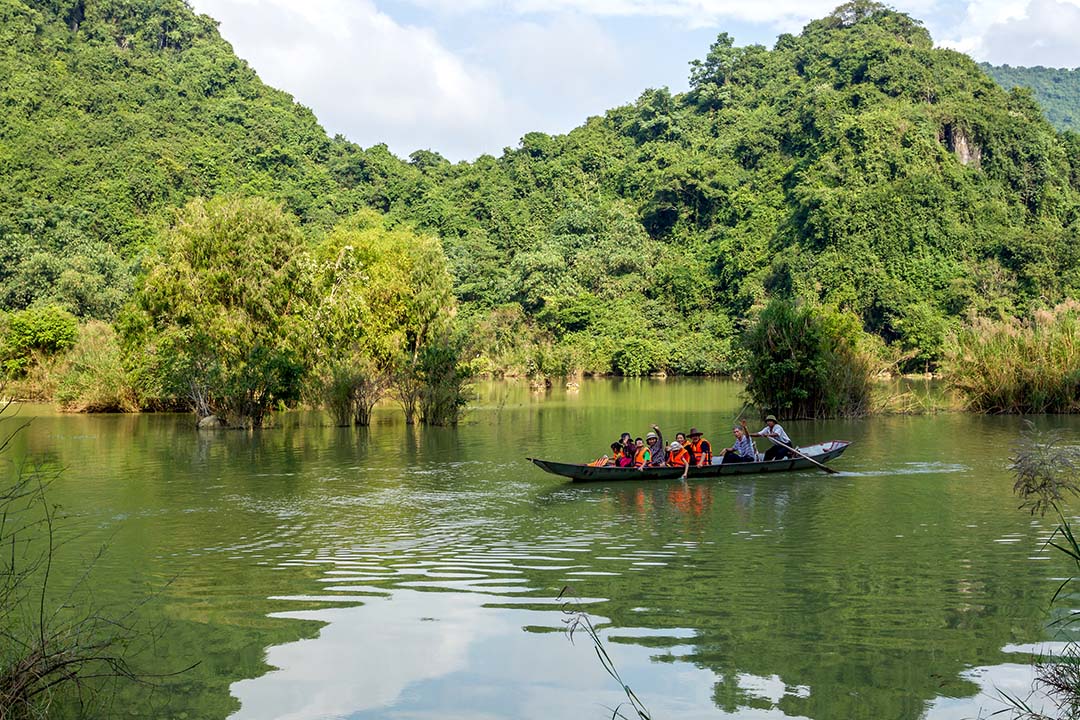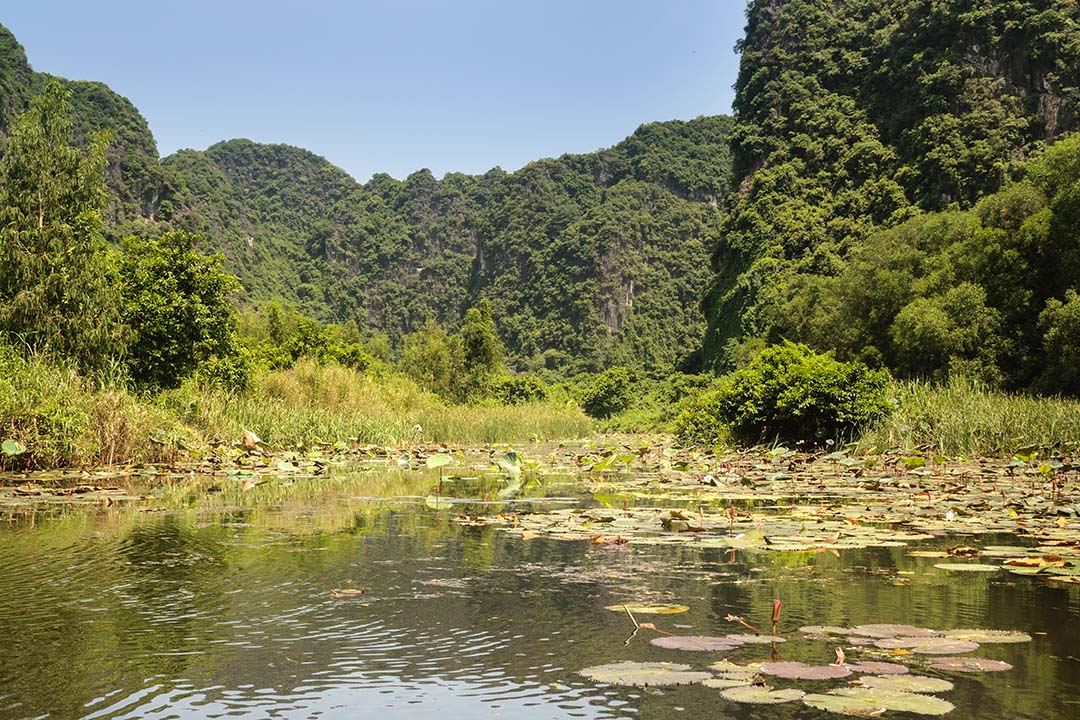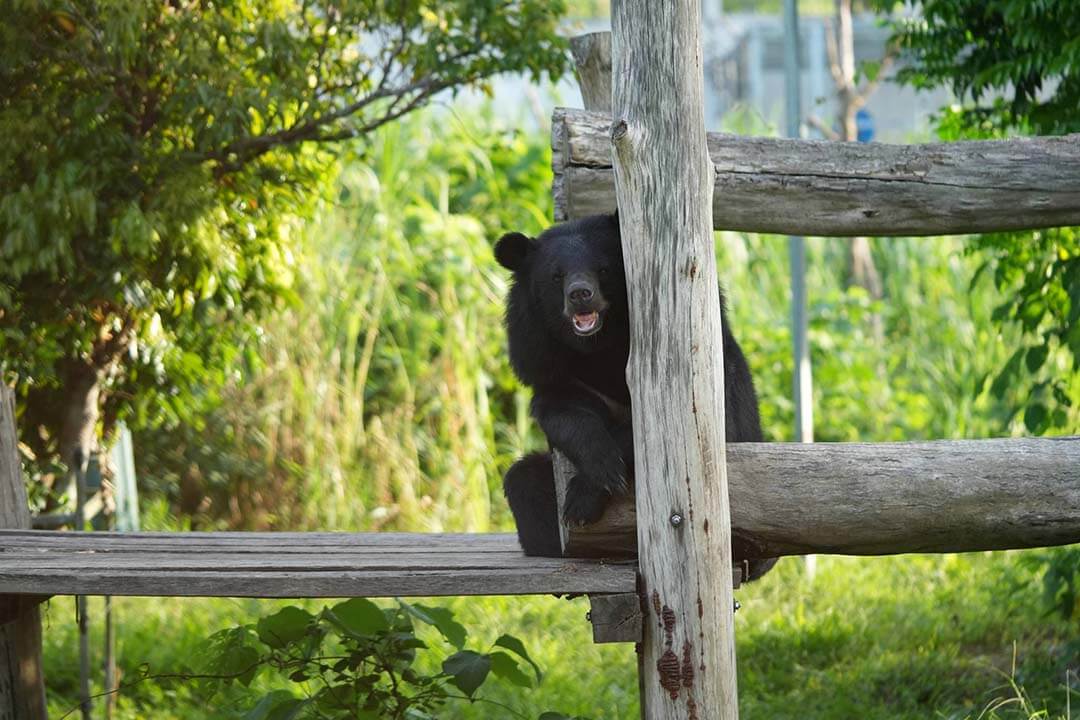Sep - 17 - 2025
Non Nuoc Pagoda, known as the “Water Mountain” Pagoda, is an ancient Buddhist sanctuary located in Ninh Binh, Vietnam. Situated at the base of Duc Thuy Mountain, it beautifully blends spirituality with nature, offering a peaceful retreat. The pagoda’s surroundings by the Day and Van Rivers lend it an ethereal quality, inviting those who seek tranquility and cultural depth.
With a history spanning over a thousand years, Non Nuoc is a testament to Vietnam’s deep-rooted Buddhist traditions and cultural significance. Its architecture showcases Vietnamese craftsmanship with intricately designed courtyards. The pagoda also features statues of spiritual figures and altars that have been preserved through the ages. Each structure within the pagoda carries symbols of devotion and artistic mastery, making it a living monument of Vietnamese spirituality.
In addition, Non Nuoc Pagoda is among the most beautiful pagodas in Ninh Binh. Located in the Le Dai Hanh area of Van Gia, Ninh Binh. Non Nuoc lies close to Non Nuoc Bridge, providing easy access to this revered site. Now, let’s GTrip tell you more about this pagoda and prepare carefully for your trip here.
History of Non Nuoc Pagoda
Non Nuoc traces its origins back over a thousand years, with a rich history shaped by successive dynasties, making it a symbol of enduring Vietnamese spirituality and culture.
Origin of pagoda
The pagoda traces its roots to the Ly Dynasty in the 11th century, a period when Buddhism flourished across Vietnam. Established as a holy temple, it was carefully positioned with two gates facing the tranquil Day River and the imposing Duc Thuy Mountain. This location was chosen to create a sacred atmosphere that would welcome both devotees and monks. The historical roots of the pagoda highlight its significance in Vietnamese heritage, reflecting the early devotion to Buddhist teachings.
The pagoda was built by Imperial Chaplain Nguyen Minh Khong under the reign of King Ly Nhan Tong. In the 13th century under the Tran Dynasty, it was restored by monk Tri Nhu and was given another name by the famous scholar Truong Han Sieu, “Duc Thuy Son”.
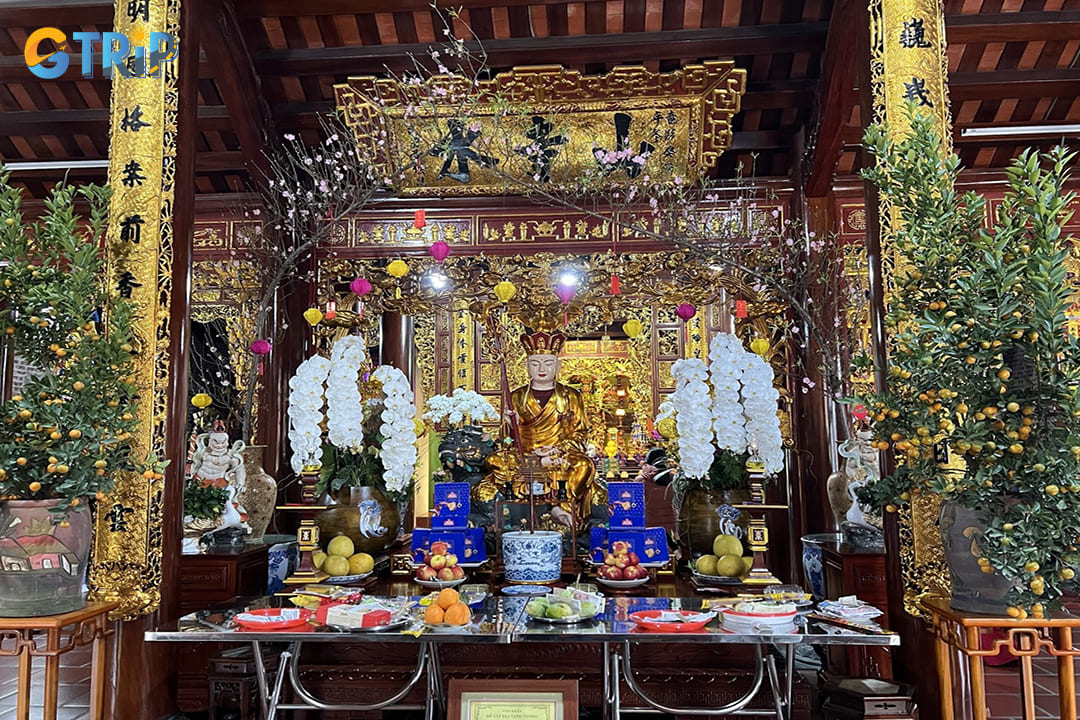
The shrine inside Non Nuoc Pagoda
Renovations and transformations
Over the centuries, Non Nuoc Pagoda saw numerous renovations and transformations under various dynasties. Each dynasty contributed unique architectural styles and enhancements, adding layers of cultural legacy to this sacred site. The Tran, Le, and Nguyen dynasties left particularly notable marks, restoring the pagoda to preserve its sanctity and adapt it to the needs of a growing spiritual community. These changes ensured the pagoda remained a central place of worship, embodying both tradition and evolving artistry.
Cultural significance
Non Nuoc holds deep cultural significance as a revered site for Buddhist monks and spiritual leaders. It has long served as a place for meditation, pilgrimage, and scholarly learning, nurturing a legacy of Buddhist thought and practice. The pagoda commemorates Vietnam’s religious heritage and remains a symbol of spiritual endurance. It draws generations of believers seeking peace and enlightenment. Its enduring heritage continues to inspire reverence, affirming its role in Vietnam’s spiritual and cultural landscape.
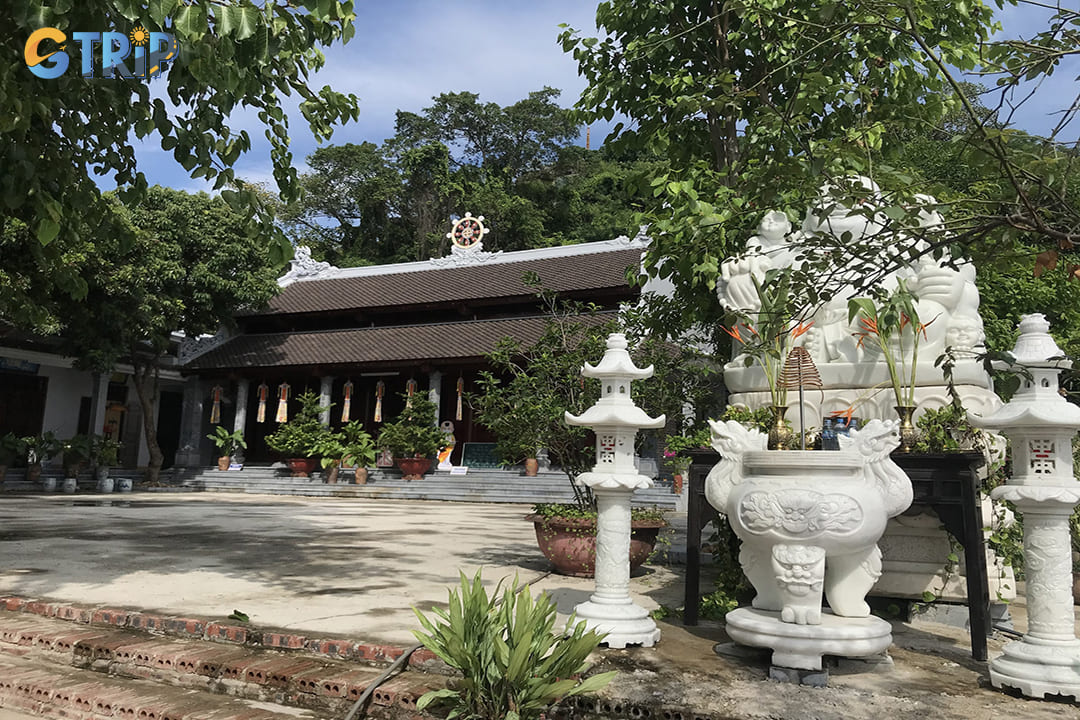
Cultural significance of Non Nuoc Pagoda
Architecture of Non Nuoc Pagoda
The pagoda, with an area of 2000m2, was built entirely of stone under the reign of King Ly Nhan Tong. The temple is surrounded by lush green grounds with a myriad of plants and trees. The temple has two gates, one in the North, one in the Southeast overlooking the Day River. This is also the gate where many people choose to release fish every time the Kitchen Gods go to heaven in the days before the Lunar New Year.
Traditional Vietnamese style
The architecture of the pagoda showcases traditional Vietnamese design, embodying elements that honor both spiritual beliefs and cultural aesthetics. The pagoda features the iconic curved roofs often seen in Vietnamese temples, designed to resemble a phoenix’s wings spreading upward. This design not only adds an elegant touch but also holds symbolic meaning, representing a bridge between the earth and sky. Intricate carvings cover the structures, with each detail preserving the craftsmanship passed down through generations.
The main hall is located in the center with a double roof system, two colors of blue and red on the tiles are extremely eye-catching. The tail of the temple roof is curved combined with the image of carved dragons and phoenixes, contributing to the traditional beauty of the temple.
Construction materials
Non Nuoc incorporates natural materials like stone and wood, emphasizing the harmony between the temple and its surroundings. The use of local stone in the foundations and walls provides strength and durability. While carved wooden pillars bring warmth to the space. Each wooden beam is carefully crafted to showcase the natural beauty of the material. This connects the pagoda’s interiors to the surrounding landscapes. This thoughtful selection of materials not only supports the structure but also reflects traditional construction practices deeply rooted in Vietnamese culture.
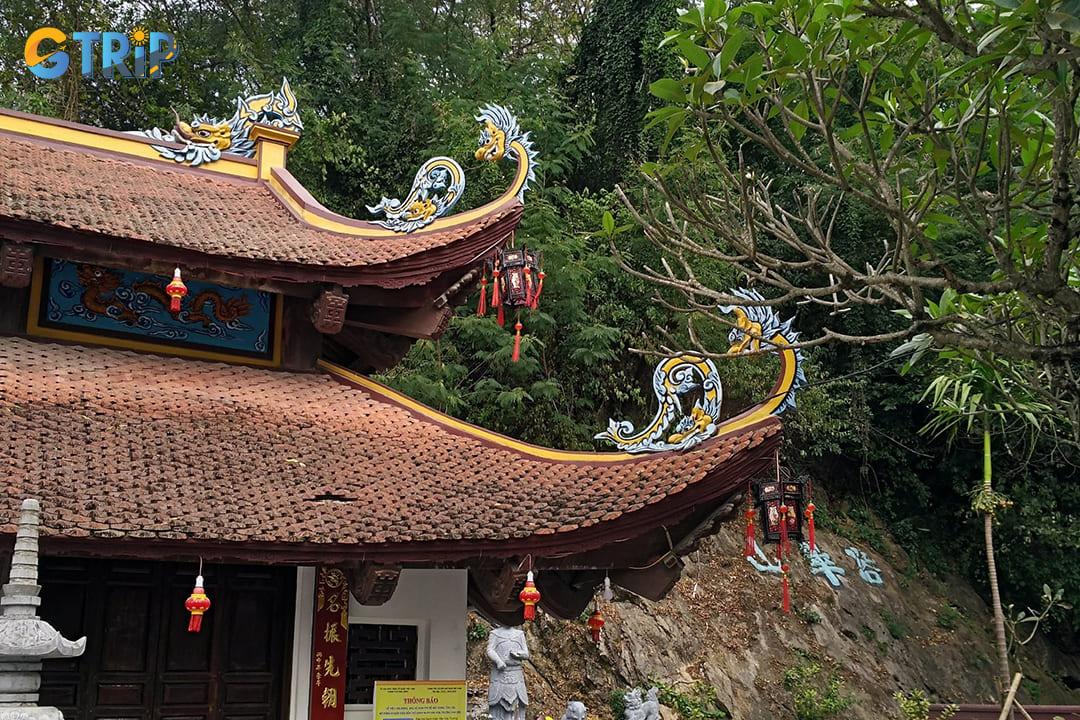
Traditional Vietnamese style of the Non Nuoc Pagoda's architecture
Statues
And as soon as you step through the gate, you will immediately see a statue of Bodhisattva Avalokitesvara along with many other stone statues in the temple yard. Inside the main temple is a giant gilded Buddha statue in the middle with many small statues beside it.
The Buddha statues within the pagoda are grand and intricately crafted, standing as powerful symbols of Buddhist devotion and artistry. These statues capture the serene expressions of the Buddha, with eyes gently closed and faces softened in calm contemplation. They embody the ideals of inner peace and compassion.
Crafted from durable materials that have withstood the test of time, each statue’s robe features delicate folds and details. Those show off the skill and care of traditional Vietnamese craftsmanship. Placed in carefully chosen spots throughout the pagoda, these statues serve as focal points for prayer and meditation. They also reflect the spiritual strength and artistry that make Non Nuoc a revered place.
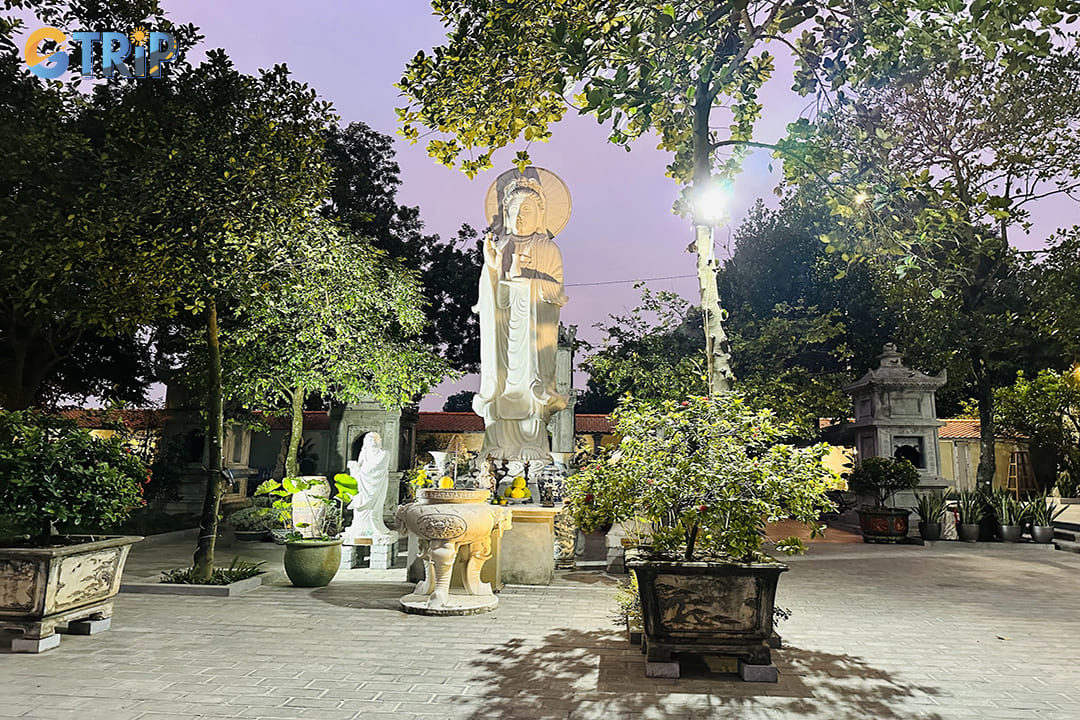
The grand Buddha statues within the pagoda
Ornamental details
Ornamental carvings are abundant throughout Non Nuoc Pagoda, depicting traditional symbols such as lotus flowers, dragons, and phoenixes. These carvings are not merely decorative. They are deeply symbolic, with the lotus representing purity, the dragon symbolizing protection, and the phoenix embodying rebirth. The intricate designs on doorways, pillars, and altars add layers of beauty and meaning to the overall aesthetics. Through these detailed carvings, the pagoda preserves and highlights the cultural artistry that has shaped Vietnamese spiritual sites for centuries.
Poetry Mountain and nearby attractions
Another place that you should explore is Poetry Mountain and some other nearby attractions.
Poetry Mountain’s overview
Poetry Mountain or Duc Thuy Son, located near Non Nuoc, offers captivating views that enhance the overall experience of this sacred site. This mountain symbolizes a deep connection to the natural and spiritual worlds, representing harmony between humanity and nature. The historical significance of Poetry Mountain is intertwined with Non Nuoc Pagoda. Both have stood as beacons of spirituality and culture in the region for centuries. Together, they attract travelers and pilgrims alike, inviting exploration of their rich heritage.
Cultural value
Throughout history, Poetry Mountain has inspired countless poets and scholars, serving as a muse that sparks creativity and reflection. The serene landscape fosters an environment that encourages artistic expression. Many poets have come to this mountain to find solitude and inspiration, revealing the profound impact it has on those who seek to capture its beauty through words. This cultural value enhances the significance of both the mountain and the pagoda, as they collectively represent the artistic spirit of the region.
For centuries, Poetry Mountain has been a source of inspiration for Vietnamese poets and scholars. Its name reflects this literary connection, as numerous verses and inscriptions are etched onto its rocky surfaces. These poems often celebrate the harmony between humans and nature, emphasizing themes of peace, reverence, and reflection. Scholars have visited the site for inspiration, carving their verses into the mountain as a testament to its enduring beauty.
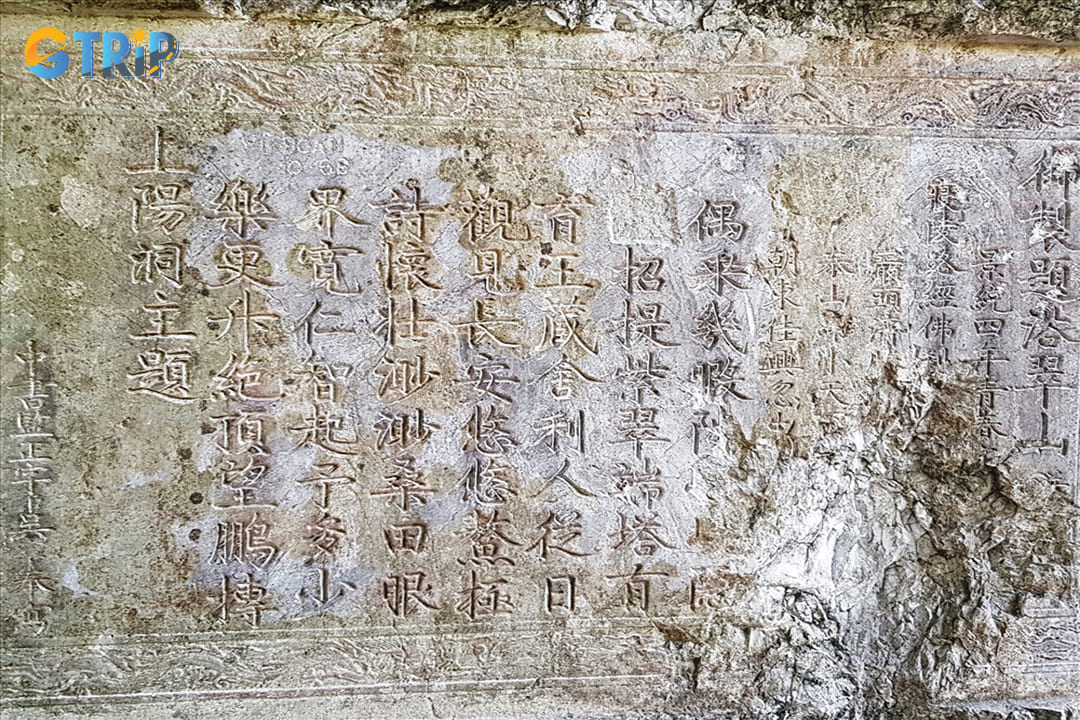
Stone slab inside Poetry moutain near Non Nuoc Pagoda
Viewpoint
The unique vantage point of Poetry Mountain provides breathtaking panoramic views of the Day River and the surrounding landscapes. From its heights, you can see lush rice paddies stretching towards the horizon, punctuated by the gentle curves of the river below. The vistas from this viewpoint inspire awe and tranquility, revealing the natural beauty that defines Ninh Binh.
Scenic and historical sites
In addition to the beauty of Poetry Mountain, several nearby tourist sites enrich the experience for those visiting Non Nuoc. Just a short journey away lies the Hoa Lu Ancient Capital, the historical heart of Vietnam during the Dinh and Le dynasties. Here, ancient temples and ruins echo the past, offering insights into the nation’s heritage. Another popular destination is Tam Coc, known for its stunning boat rides through rice fields and limestone caves, providing a unique perspective on the local landscape. Bich Dong Pagoda, a picturesque site built into the mountainside, is also nearby and adds to the spiritual allure of the area.
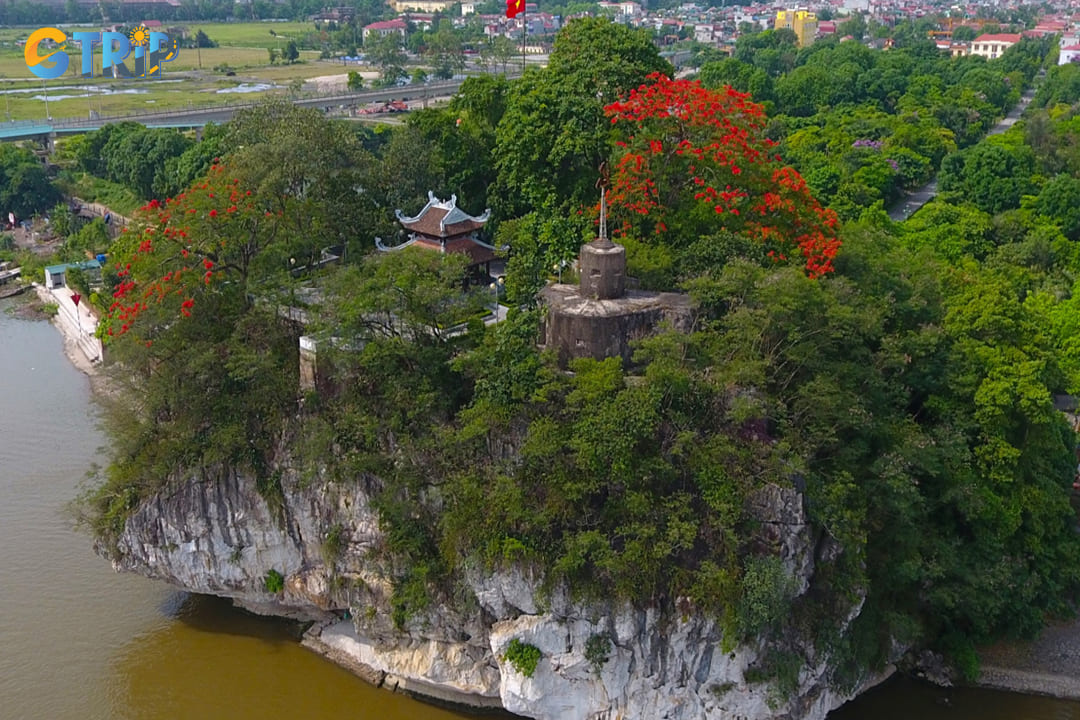
Poetry Mountain
Complementary experiences
For those looking to maximize their visit to the pagoda, several combined tours offer excursions that include Poetry Mountain and other highlights of Ninh Binh. These experiences often encompass guided trips to Hoa Lu Ancient Capital, boat tours in Tam Coc, and visits to the serene Bich Dong Pagoda. By incorporating these attractions, travelers can enjoy a fuller appreciation of the cultural, historical, and natural richness of the region. Together, these sites create an unforgettable journey, inspiring a deeper connection to the beauty and heritage of Ninh Binh.
Cultural and spiritual value
The pagoda holds an important cultural and spiritual value in the region.
Religious affiliation
Non Nuoc represents a significant Buddhist temple, embodying the core beliefs and teachings of Buddhism. As a place of worship, it fosters an environment where individuals can deepen their spirituality and connect with the essence of their faith. The pagoda’s architectural design, adorned with symbolic statues and intricate carvings, conveys the richness of Buddhist customs and traditions.
Role in community
The pagoda holds immense cultural and spiritual value within the local community, serving as a central hub for worship and spiritual retreat. For many, Non Nuoc is a sanctuary where they can seek solace from the complexities of daily life. It strengthens community bonds by bringing together individuals of all ages to engage in shared practices. Locals and pilgrims alike come to the pagoda not only to worship but also to participate in communal activities that enrich their lives and promote mutual support.
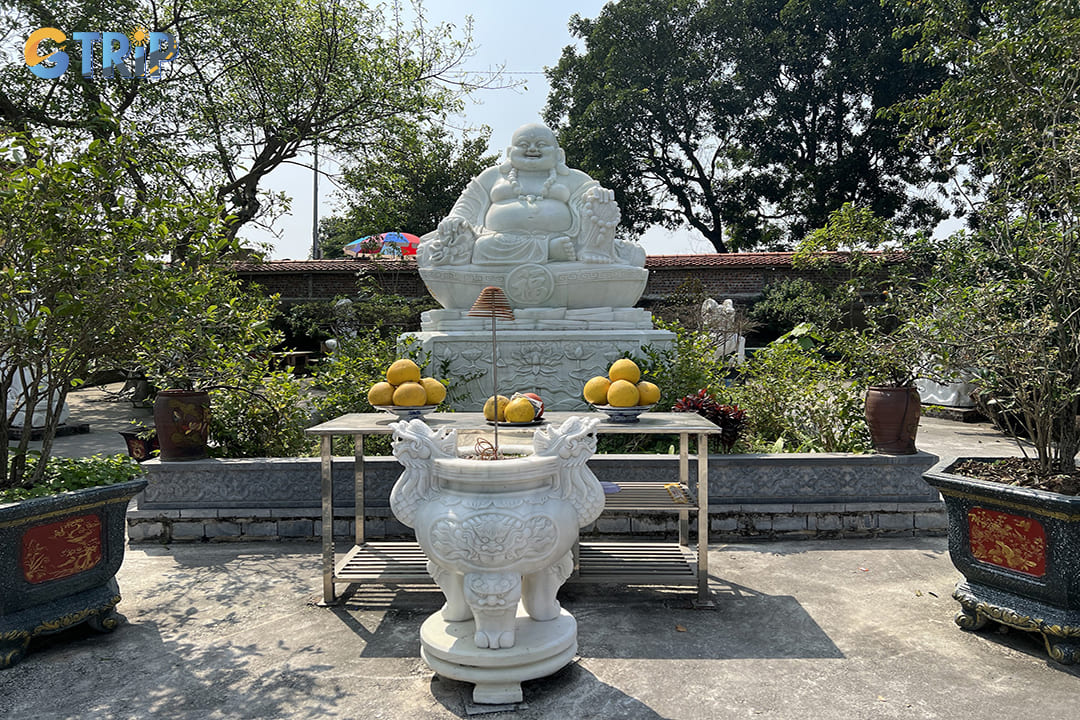
Religious affiliation of Non Nuoc Pagoda
Festivals and rituals
This pagoda is also a place where some festivals take place every year. You can also do daily rituals in Non Nuoc Pagoda.
Key festivals
Non Nuoc hosts several key festivals that reflect the vibrant traditions of Buddhism, significantly enriching the cultural landscape of the region. Important events such as Vu Lan, a celebration honoring one’s ancestors. It attracts devotees who come to offer incense, pray, and reflect on family bonds. Monks lead ceremonies that create a spiritually rich atmosphere, emphasizing compassion and respect for one’s lineage.
Another one is that the New Year Festivals draw large crowds, featuring colorful ceremonies and communal gatherings. This festival marks the arrival of the new lunar year and involves purification rituals where worshippers pray for good fortune and health. Families gather in colorful attire, offering fruits and flowers, while monks lead traditional chants.
Daily practices
In addition to these grand celebrations, daily practices at the pagoda play a crucial role in maintaining the spiritual rhythm of the temple. Each day, prayer sessions are held, where monks and practitioners gather to recite scriptures, chant, and meditate. These rituals not only strengthen individual beliefs but also cultivate a profound sense of spirituality within the community. By participating in these daily activities, individuals engage with their customs and find deeper meaning in their spiritual lives.
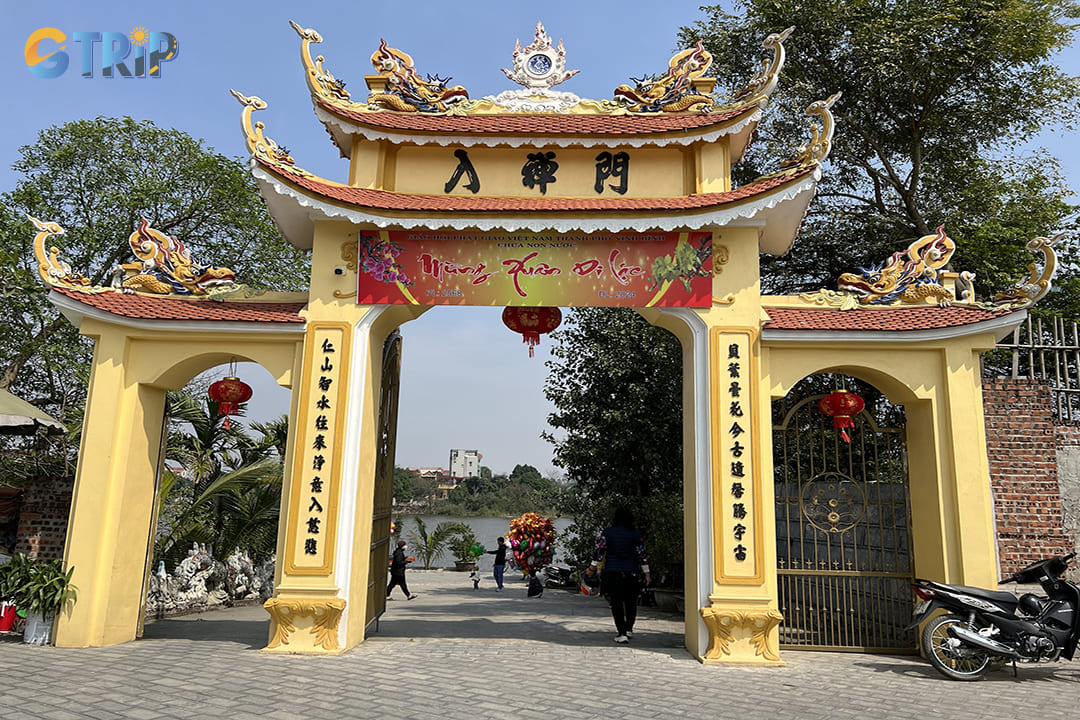
The gate of Nuoc Pagoda
Visitor experience
There are some activities that can enhance your experience when coming to this pagoda.
Touring activities
There are 2 main activities that you can participate in here.
Sightseeing
A journey to Non Nuoc Pagoda allows for an enriching experience steeped in cultural and spiritual exploration. Upon arrival, people are greeted by the stunning architectural features that define the pagoda’s unique charm. The beautifully curved roofs, intricate carvings, and serene courtyards provide a backdrop for peaceful sightseeing. As you wander the grounds, the large Buddha statues invite reflection, creating a tranquil atmosphere perfect for contemplation and appreciation of the artistry on display.
Religious practices
In addition to the architectural marvels, the pagoda offers numerous opportunities for religious practices. Guests are encouraged to engage in praying and meditating within the peaceful surroundings. You can participate in rituals such as offering incense, which fosters a sense of connection to the spiritual essence of the site. These activities immerse everyone in the rich traditions of Buddhism and provide insights into the beliefs.
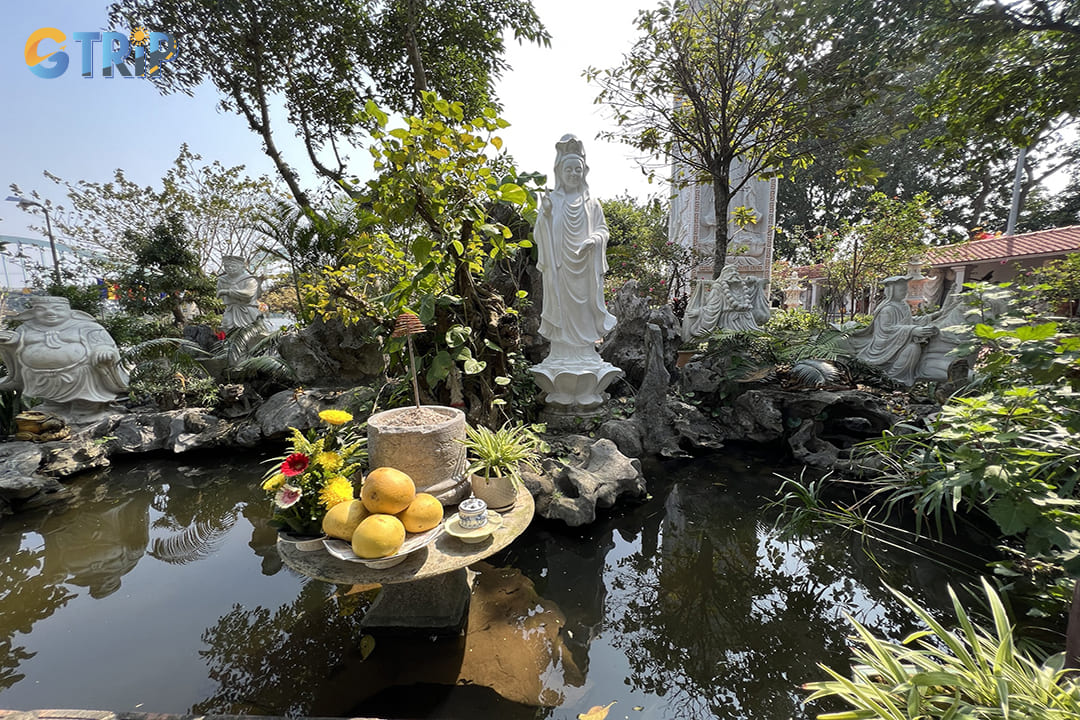
Religious practices in Non Nuoc
Opening hours
Non Nuoc Pagoda welcomes all throughout the year, with general opening hours from early morning until late afternoon. This allows ample time for exploration and reflection, whether you prefer a quiet morning visit or a leisurely afternoon stroll. During special events or festivals, the pagoda often extends its hours, creating a vibrant atmosphere filled with communal activities and celebrations.
Entrance fees
The entrance to the pagoda is typically free, making it accessible to everyone. However, during peak seasons or major religious events, there may be nominal fees to help maintain the grounds and support the temple’s activities. These fees contribute to the preservation of this cherished site, ensuring that it continues to welcome guests and foster spiritual growth for years to come.
How to get to Non Nuoc Pagoda
So how to get to this pagoda? Let’s explore!
Location and transport
Non Nuoc Pagoda is easily accessible by various means of transportation, making it a convenient destination for those exploring the Ninh Binh region. To get from Ninh Binh to the pagoda, the journey is straightforward and offers a few convenient transportation options.
- By motorbike or car: From Ninh Binh city center, head towards Le Dai Hanh Street. The pagoda is located just about 1 km away, making for a short and pleasant drive. Simply follow the road, and you’ll reach the pagoda in no time.
- By taxi: If you prefer not to drive, you can easily take a taxi from anywhere in Ninh Binh city. Taxis are readily available and provide a comfortable option for reaching the pagoda without the hassle of navigating the streets yourself.
- By bicycle: For those who enjoy cycling, renting a bicycle is a fantastic way to explore the area. The ride to the pagoda is scenic and can be completed in a leisurely manner, allowing you to take in the beautiful surroundings along the way.
Non Nuoc Pagoda is located just 1.5 to 2 hours from downtown Hanoi, making it very convenient for your visit. You can reach the pagoda by motorbike, car, or bus.
- By motorbike or car: From Hanoi, head towards Giai Phong Road, then take the Phap Van – Cau Gie exit. You’ll arrive in Phu Ly before continuing on to Ninh Binh city. The pagoda is situated right within the city, from the Ninh Binh bus station, it’s only about 1 km along Le Dai Hanh Street to reach your destination.
- By bus: You can also catch a bus from Giap Bat bus station or book a ticket with one of the companies running the Ninh Binh – Hanoi route. The ticket prices are quite affordable, typically under 100,000 VND. Once in Ninh Binh city, you can rent a motorbike or take a taxi to visit the pagoda.
>>> Get full information about all transport from Hanoi to Ninh Binh now
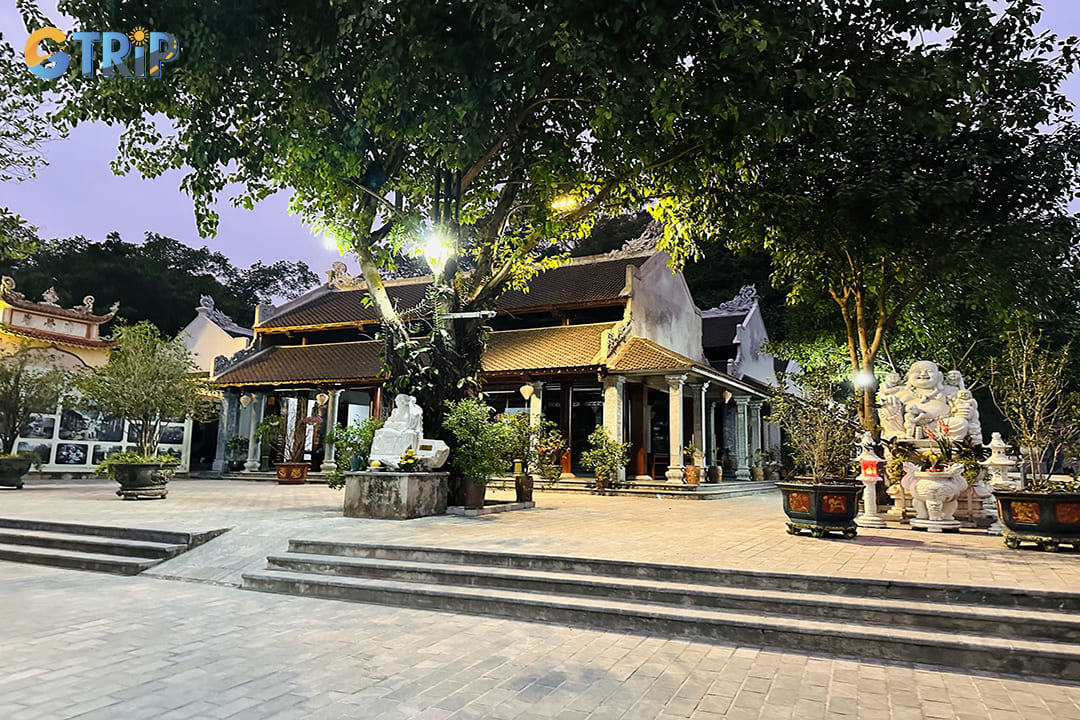
Landscape inside Non Nuoc Pagoda at dusk
Navigational tips
To reach Non Nuoc Pagoda, travelers should take the DT491 road and follow the signs towards Non Nuoc Bridge. This route connects through the picturesque landscapes of Ninh Binh, leading to a serene approach to the pagoda. Once you cross the Non Nuoc Bridge, continue on the road, and the pagoda will be visible, surrounded by lush greenery and mountains. For those using public transport, local buses often stop at key landmarks near the pagoda, making it easy to navigate from the bus station. Keep an eye out for local signposts that guide you directly to the entrance.
Accessibility considerations
Non Nuoc offers a generally accessible experience, though some considerations are necessary for people with limited mobility. The pathways leading to the pagoda are mostly paved, allowing for easier navigation. However, certain areas may include steps, which could pose challenges. It’s advisable for those with mobility issues to plan their visit accordingly and consider traveling with a companion who can assist. Additionally, the temple staff are known for their hospitality and may provide support to enhance accessibility during your visit.
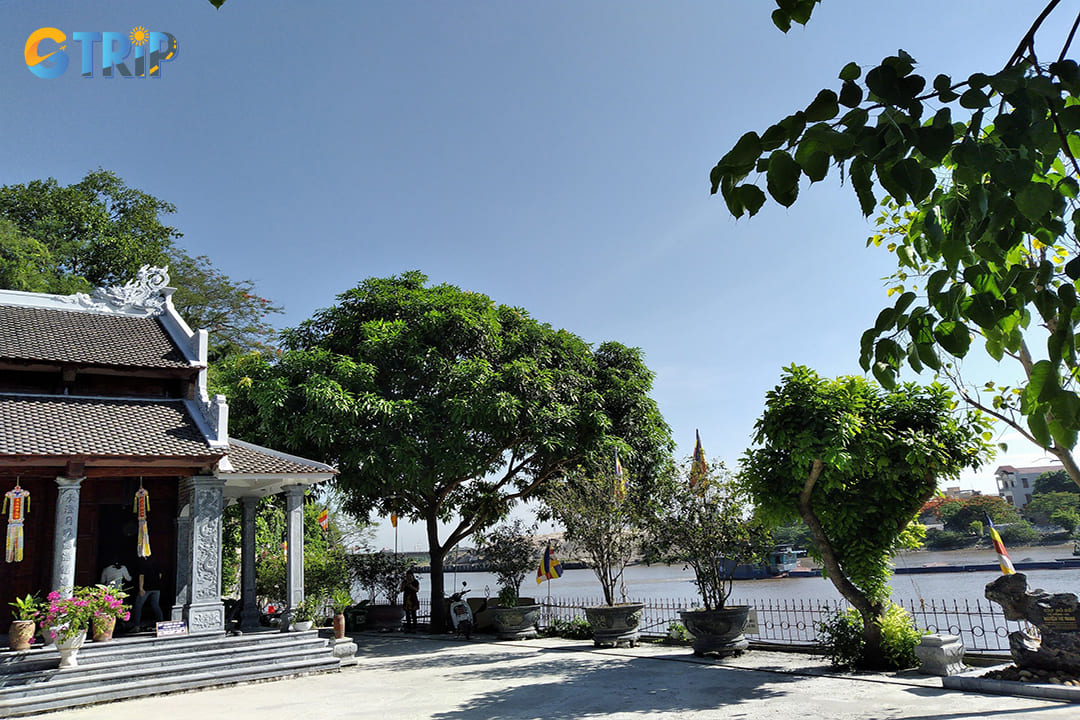
Non Nuoc offers a generally accessible experience
Unique aspects of Non Nuoc Pagoda
What makes this pagoda so unique? There are some aspects that you should know about this place.
Mountain setting
Non Nuoc Pagoda stands out with its unique positioning on a low mountain, offering breathtaking views over the Day River. This elevated location not only enhances the temple’s spiritual ambiance but also provides a stunning backdrop of natural beauty. From the pagoda, you can gaze upon the winding river, lush green fields, and distant mountains. The combination of serene surroundings and elevated vantage points draws nature lovers and those seeking tranquility.
Heritage value
The heritage value of the pagoda is evident in its rich cultural history as a traditional Buddhist site. This sacred location features ancient relics and artifacts that highlight its significance as a spiritual haven for centuries. The pagoda is imbued with a sense of reverence and tranquility, attracting individuals who seek to connect with the divine. Its distinctiveness lies in its ability to preserve the essence of Buddhist traditions while being a living site for worship and contemplation. The well-maintained architecture and relics of the pagoda emphasize its cultural legacy, making it a cherished landmark.
Photogenic landscapes
Non Nuoc Pagoda also attracts photographers and nature enthusiasts with its photogenic landscapes. The charm of this site is amplified by the breathtaking scenery that surrounds it, offering countless opportunities for stunning photographs. The interplay of light and shadow on the pagoda’s architecture, combined with the lush greenery and the flowing river below. Whether capturing the vibrant hues of sunset reflecting off the water or the delicate details of the temple’s carvings. The unique atmosphere here provides inspiration for both religious tourists and artists alike. This picturesque setting is not only a feast for the eyes but also a place where memories can be captured and cherished forever.
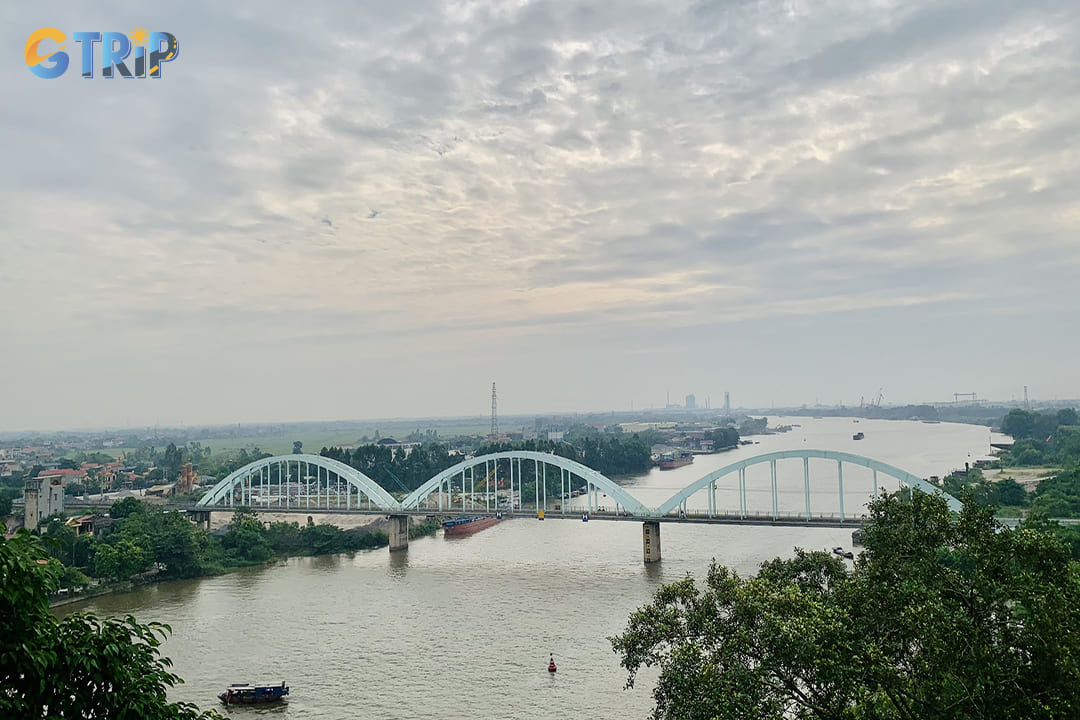
Photogenic landscapes of the pagoda
Practical tips for visitors
Here are some tips for you when visiting Non Nuoc pagoda.
Best time to visit
When planning a trip to Non Nuoc Pagoda, it’s advisable to consider the best time to visit for an optimal experience. The ideal seasons are typically from late spring to early autumn (March to September), when the weather of Ninh Binh is mild and the landscapes are lush and vibrant. Visiting in the early morning or late afternoon can also enhance your experience, as the light is softer and the atmosphere is quieter. These times are perfect for meditation and reflection, allowing for a more serene environment to appreciate the beauty of the pagoda and its surroundings.
Local etiquette
Non Nuoc Pagoda, as a traditional Buddhist site, has specific cultural etiquette that everyone should be aware of. It is recommended to dress modestly, covering shoulders and knees, as a sign of respect for the sacred environment. It’s also advisable to remove shoes before entering the main areas of the pagoda, as this is a common practice in Buddhist temples. When interacting with monks or participating in rituals, be respectful and maintain a calm demeanor. These practices not only show respect for the temple’s traditions but also enhance your overall experience.
Weather considerations
Weather can significantly impact your visit to Non Nuoc Pagoda, so it’s important to prepare accordingly. During the rainy season, which typically runs from May to October, it’s wise to carry an umbrella or raincoat to stay dry. The pagoda’s mountain setting can make temperatures feel cooler in the mornings and evenings, so layering clothing is recommended. Conversely, during the hotter months, it’s advisable to wear lightweight, breathable fabrics and stay hydrated.
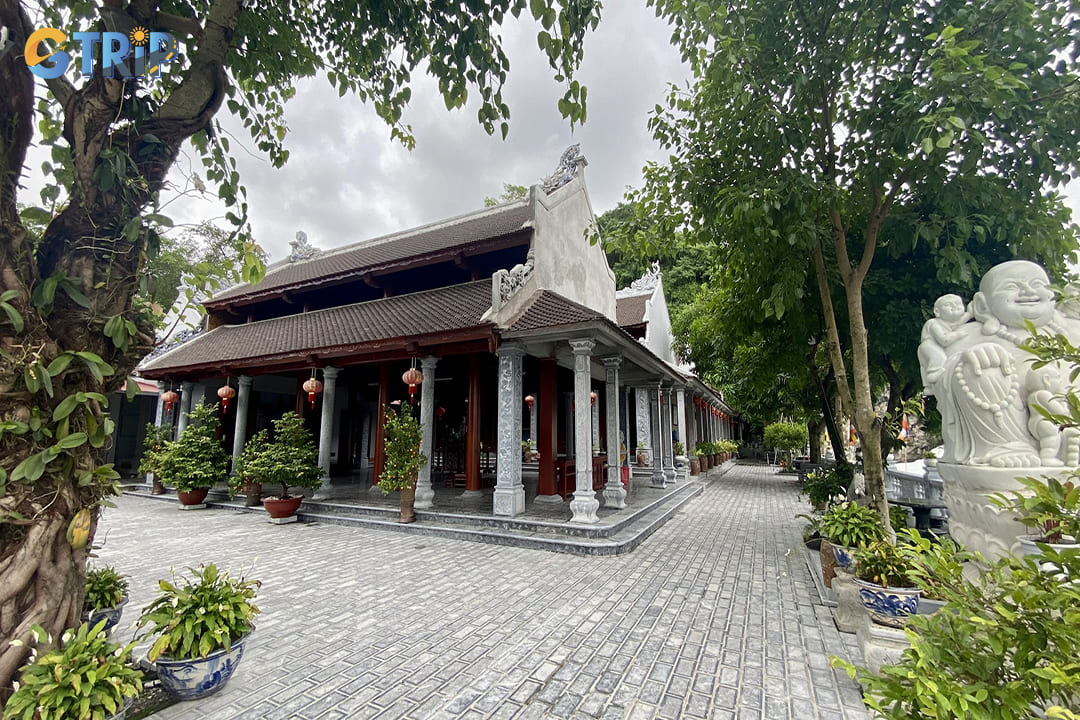
A corner inside Non Nuoc Pagoda
Conclusion
In summary, Non Nuoc Pagoda encapsulates the essence of serenity and historical richness, making it a remarkable destination. This sacred site not only celebrates Vietnam’s Buddhist heritage but also emphasizes the harmonious relationship between nature and spirituality. The picturesque surroundings and intricate architecture inspire reflection, leaving you with a deep appreciation for the legacy of this extraordinary location.
As you plan your journey, consider exploring Non Nuoc Pagoda and embracing its unique blend of natural beauty and cultural significance. Don’t miss the opportunity to immerse yourself in the tranquil atmosphere and discover the treasures that await at Non Nuoc Pagoda.

